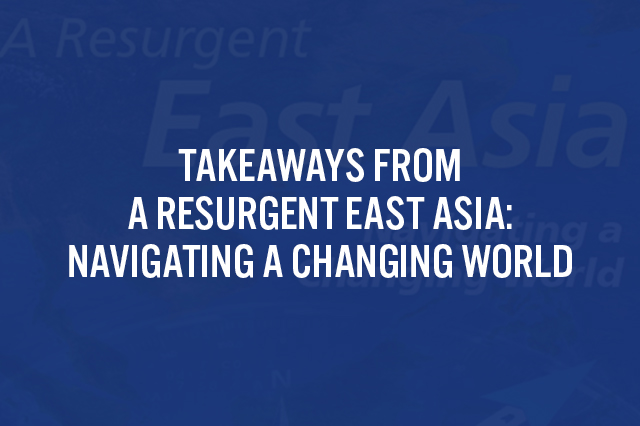
Nitheesh NH
The Coresight Research team attended the launch event for a report titled A Resurgent East Asia, co-organized by the World Bank Group and the Hong Kong University of Science and Technology, held in Hong Kong January 31. The event and the World Bank Report discussed the challenges 10 developing countries face when trying to progress from middle-income to high-income, and outlined policy recommendations for coping with these challenges. A middle-income country had a gross national income per capita ranging from $996 to $12,055, while a high-income country had $12,056 or more in 2017, according to the World Bank’s definition. The 10 countries the World Bank Group considers “developing East Asian” includes Cambodia, China, Indonesia, Laos, Malaysia, Mongolia, Burma, the Philippines, Thailand and Vietnam (although most would consider many of these countries to be in Southeast Asia, for the purpose of this report we will follow World Bank convention).
Here are some key insights from the event.
East Asia: Fastest-Growing Developing Region Over the Last Quarter Century
Sudhir Shetty, Chief Economist at the World Bank, pointed out that East Asia was the fastest-growing developing region in terms of annual GDP growth between 1991 and 2016. The region’s GDP more than tripled since 2000. The proportion of the region’s population living in poverty was less than 13% in 2016 - down dramatically from over 50% in 2002. Around two-thirds of the region’s population are now considered to be middle class.
The East Asian Development Model
The success of these economies has been built on the “East Asian Development Model,” which the World Bank says includes policies and initiatives to promote export-oriented manufacturing, supported by education designed to support economic growth.
However, developing East Asia still has some gaps to fill. China’s per capita GDP is only one-fifth the average for high-income economies, followed by Vietnam at just 5% and Cambodia at 3%, according to the World Bank report. When South Korea achieved high-income status in 2000, its labor productivity was 2.5 times higher and its human capital was one-third higher than China’s was in 2018.
Emerging Challenges in the Midst of Growth
In the process of growth, the World Bank pointed out some challenges East Asian countries face:
 A Resurgent East Asia: World Bank report launch
A Resurgent East Asia: World Bank report launch
Source: Coresight Research[/caption] Policy Implications To better prepare developing East Asian countries to move from middle-income to high-income, these countries need to proactively address these challenges through several means recommended by the World Bank, including:
- Slowing productivity growth: In the last 12 years, trade in goods has slowed. The World Bank estimated that future growth in services will be more robust than that of goods. However, the developing East Asian region has been more reluctant to open services sectors than it has for goods manufacturing, in terms of foreign investment, ownership and operating.
- Social inclusion at risk: Amid the rapid spread of technology, there are concerns of increasing levels of opportunity inequality among the people in the region, which could mean some members of society may not benefit from economic development if they do not enjoy equal access to digital technology.
 A Resurgent East Asia: World Bank report launch
A Resurgent East Asia: World Bank report launchSource: Coresight Research[/caption] Policy Implications To better prepare developing East Asian countries to move from middle-income to high-income, these countries need to proactively address these challenges through several means recommended by the World Bank, including:
- Boosting economic competitiveness: By reforming the services sector to further open to trade in services, including reducing entry barriers for foreign companies and fostering competition.
- Promoting inclusion: By expanding access to digital technologies and making them more affordable to the public and ensuring everyone has access to education that prepares them for the changing economy.
- Strengthening state institutions: By expanding mechanisms for citizens to participate in civil society. Governments could improve bureaucratic quality by hiring based on merit.